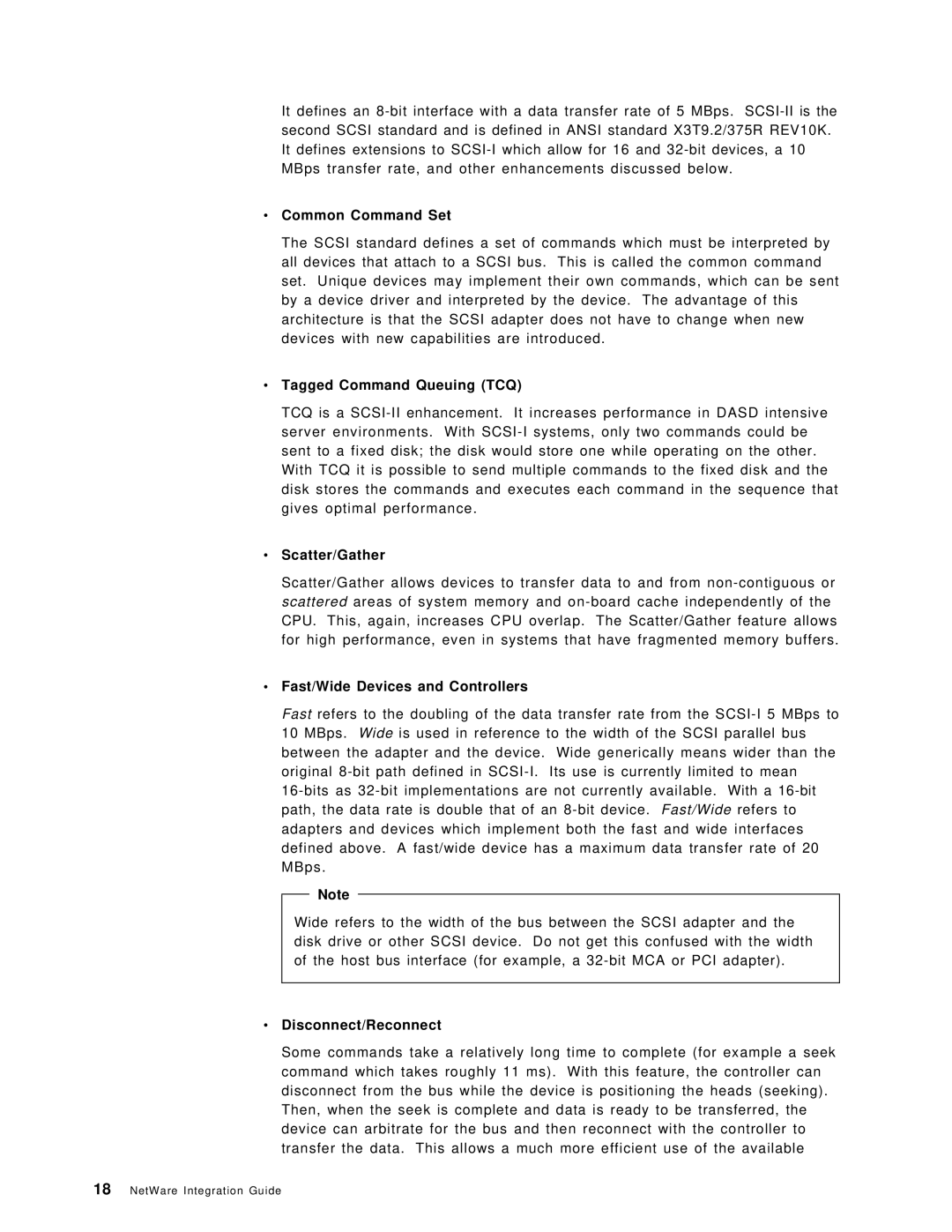It defines an 8-bit interface with a data transfer rate of 5 MBps. SCSI-II is the second SCSI standard and is defined in ANSI standard X3T9.2/375R REV10K. It defines extensions to SCSI-I which allow for 16 and 32-bit devices, a 10 MBps transfer rate, and other enhancements discussed below.
∙Common Command Set
The SCSI standard defines a set of commands which must be interpreted by all devices that attach to a SCSI bus. This is called the common command set. Unique devices may implement their own commands, which can be sent by a device driver and interpreted by the device. The advantage of this architecture is that the SCSI adapter does not have to change when new devices with new capabilities are introduced.
∙Tagged Command Queuing (TCQ)
TCQ is a SCSI-II enhancement. It increases performance in DASD intensive server environments. With SCSI-I systems, only two commands could be sent to a fixed disk; the disk would store one while operating on the other. With TCQ it is possible to send multiple commands to the fixed disk and the disk stores the commands and executes each command in the sequence that gives optimal performance.
∙Scatter/Gather
Scatter/Gather allows devices to transfer data to and from non-contiguous or scattered areas of system memory and on-board cache independently of the CPU. This, again, increases CPU overlap. The Scatter/Gather feature allows for high performance, even in systems that have fragmented memory buffers.
∙Fast/Wide Devices and Controllers
Fast refers to the doubling of the data transfer rate from the SCSI-I 5 MBps to 10 MBps. Wide is used in reference to the width of the SCSI parallel bus between the adapter and the device. Wide generically means wider than the original 8-bit path defined in SCSI-I. Its use is currently limited to mean
16-bits as 32-bit implementations are not currently available. With a 16-bit path, the data rate is double that of an 8-bit device. Fast/Wide refers to adapters and devices which implement both the fast and wide interfaces defined above. A fast/wide device has a maximum data transfer rate of 20 MBps.
Note
Wide refers to the width of the bus between the SCSI adapter and the disk drive or other SCSI device. Do not get this confused with the width of the host bus interface (for example, a 32-bit MCA or PCI adapter).
∙Disconnect/Reconnect
Some commands take a relatively long time to complete (for example a seek command which takes roughly 11 ms). With this feature, the controller can disconnect from the bus while the device is positioning the heads (seeking). Then, when the seek is complete and data is ready to be transferred, the device can arbitrate for the bus and then reconnect with the controller to transfer the data. This allows a much more efficient use of the available
18NetWare Integration Guide

